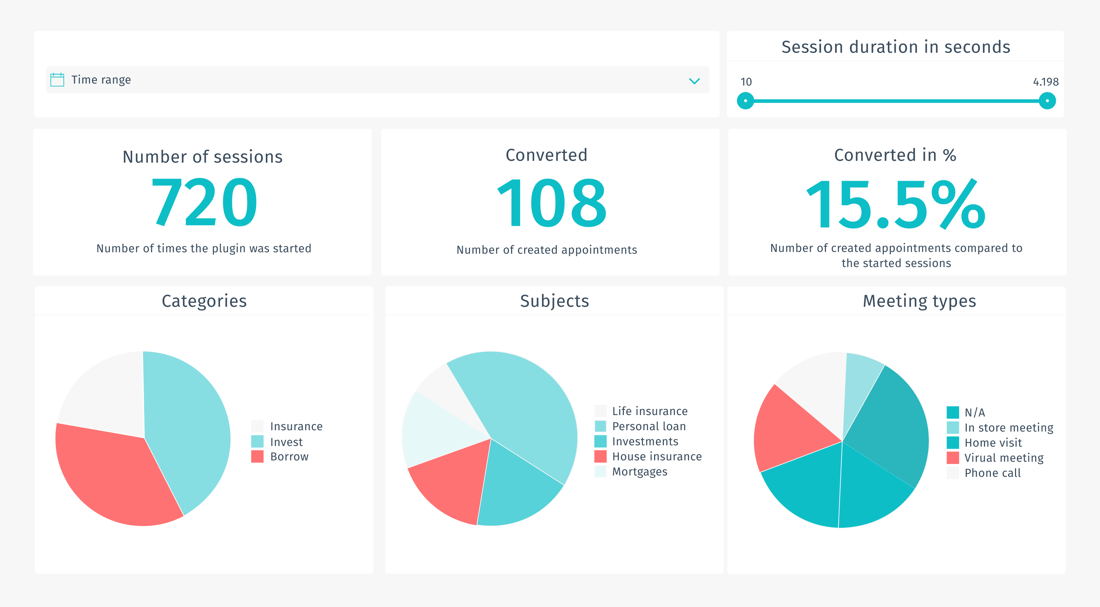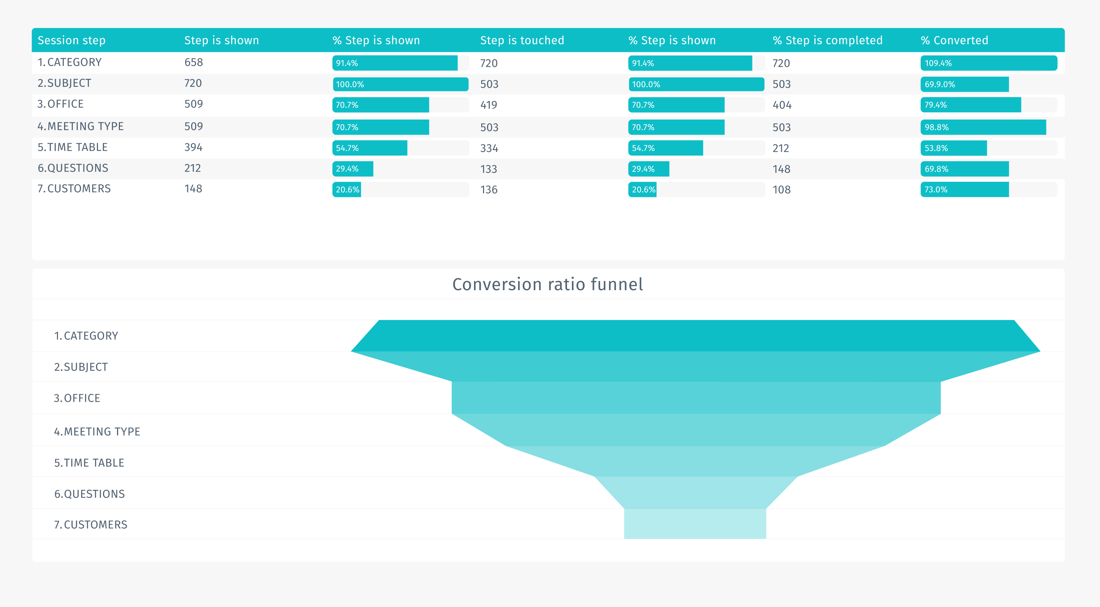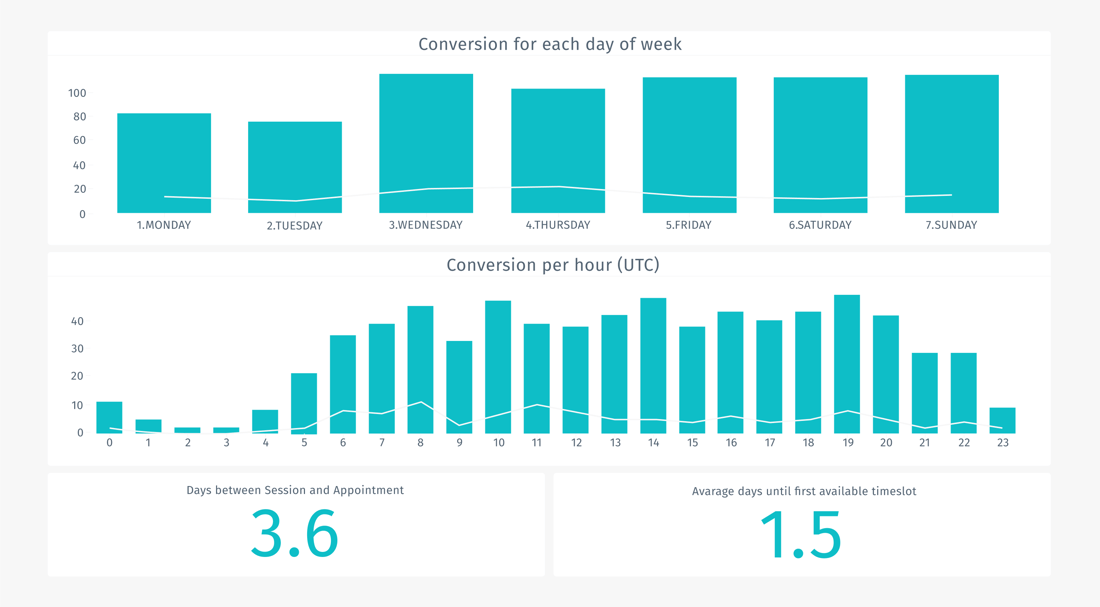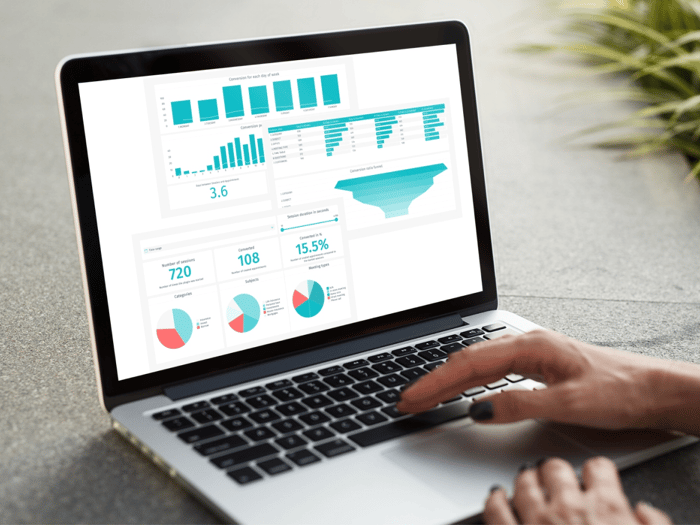Does your company provide services that rely on face-to-face expert advice? Do you get thousands of online visitors every month, but for some reason, they don't convert to qualified leads, e.g., customer meetings?
Learn how conversion analytics can help you pinpoint when your prospects are dropping off your conversion funnel.
Why are my online visitors not converting?
Every quest to find the correct answers starts with asking the right questions:
- Through which channels and touchpoints do customers convert?
- Where are the most significant drop-offs during the booking flow?
- Where do we lose the most conversions?
- What are the reasons behind that?
- Can customers find the proper meeting time slot?
- Are our meeting subjects clear enough for customers?
Answers to these questions are vital in a company’s quest to optimize its customer journeys and increase conversions. But how do you find these answers?
Relying exclusively on experience and intuition would not be the optimal and not the most accurate way to find these answers. Instead, companies must rely on factual information, statistics, and figures to validate what works and where optimization is required.
With Pexip Engage’s new addition to the platform, Conversion Analytics, it is possible to gain complete insights into the customer booking journey and optimize each process step to schedule more conversations.
What is Conversion Analytics, and what value does it deliver to your business?
Conversion Analytics is a Pexip Engage web application dashboard that shows all conversion data during a booking flow. It visualizes relevant data tracked through the solution's plug-in.
Successfully optimizing your customer journeys starts with having access to factual information, statistics, and data.
Here is how conversion analytics can help you to get more conversions:
- Understand where online visitors convert the most—enabling you to spend your marketing budget where it triggers your customers & prospects to action.
- Analyze which (customer & marketing) channels work and attract more and the right business.
- Anticipate your organization's available resources for business continuity. Avoid customer frustration and improve customer experience.
1. Summary view
Learn crucial information about the conversion behavior of your customers. Spot where you miss out on opportunities by not offering the proper meeting types, subjects, or availability.
And double down on where you see conversions are optimal.
The summary view allows you to track:
- How many people start a booking session, and how many of those complete the booking?
- How much time is spent on average per booking session, and should you be shortening or lengthening the process?

2. Digging deeper
After learning the customer’s behavior during the booking process, we can dig deeper to understand precisely where conversions are optimal and where most drop-offs happen.
Knowing where customers drop off the most during the booking flow, you can consider offering suitable fallback options in case someone does not feel ready to speak to an advisor.
Questions raised by analyzing the data:
- Where are your customers dropping off?
- Is the process too complex, and can steps be avoided or automated?
- Are you offering the proper subjects for scheduling?
- Do your customers find enough availability?
- Are customers worried about what will happen to their data?

3. Availability vs. timing
How many days before the appointment did the booking occur?
How many days between the booking attempt and the first available slot shown?
These insights offer the ability to spot if you are missing out on opportunities by not offering enough availability. Suppose there are, on average, too many days between the booking and the appointment date. In that case, there are not enough available meeting slots for customers to book.
It’s essential to meet customers at the peak of their interest to limit the risk of them canceling the appointment or looking into alternatives.
Knowing this data also gives you the information needed to optimize appointment reminders and stay on their minds.

4. Devices, browsers, and operating systems
Knowing which technology your website visitors use is vital for optimal customer journeys.
Conversion analytics allows you to see which OS, browser, and devices your visitors are using so you can optimize for increased conversions.
5. Acquisition
Where are your customers coming from when entering the booking flow?
This metric is crucial for optimizing conversions of the correct channels during a customer journey. Knowing where your customers are and where they are coming from allows you to allocate the right (marketing) resources.
Questions raised by analyzing the data:
- Are the CTAs on your website placed correctly?
- Which direct marketing campaign activated prospects & customers?
- Which Pexip Engage channels work?
- Which ones require attention?
What’s next?
Conversion analytics makes the ROI of working with Pexip Engage even more evident. It allows for continuous optimization of your customer journeys.
With this powerful addition to Pexip Engage's web application, we are giving you even more possibilities to keep delighting your customers with an incredible customer experience.
Keep an eye on this space as we develop new features and tools to help you own the complete customer journey from A to Z.
Are you interested in hearing more?
Contact us to get started!
- Financial services
- Enterprise
- Government
- Retail
- Engage




.jpg?width=500&name=Retail-multi-device-scheduling-flow-pexip-engage%20(4).jpg)
